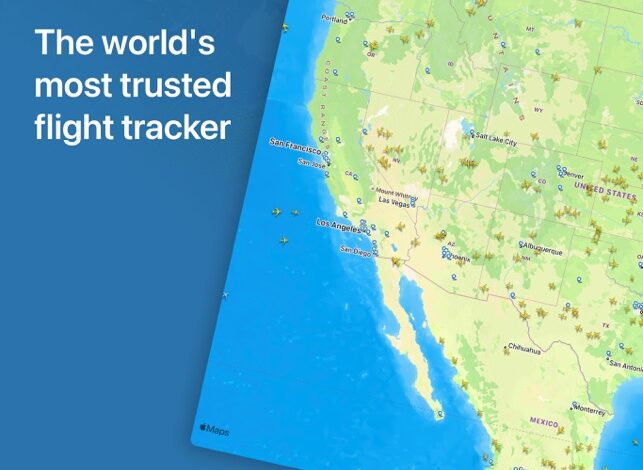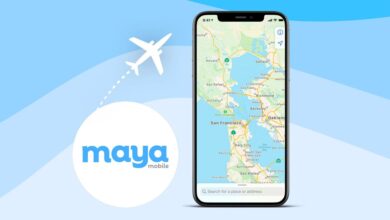Flight Tracker

Flight Tracker: A Simple, Accurate Guide to Real-Time Air Travel
Whether you’re meeting a loved one at the airport, managing tight layovers, or just love aviation, a flight tracker gives you live, reliable updates about aircraft in the sky. This guide explains how flight tracking works, what data you’ll see, how to choose a good flight tracker, and smart tips to use it like a pro.
What Is a Flight Tracker?
A flight tracker is a tool (website, app, or dashboard) that shows an aircraft’s real-time position and status—departure, route, altitude, speed, and expected arrival. Most flight trackers combine live radio signals from aircraft with airport schedules and airline updates to create a constantly refreshed picture of global air traffic.
How Flight Tracking Works (In Plain English)
- ADS-B (Automatic Dependent Surveillance–Broadcast):
Many planes broadcast their GPS position, altitude, heading, and speed. Ground receivers and satellites pick up these signals and feed them into flight trackers. - MLAT (Multilateration):
For aircraft without GPS broadcasts, trackers can estimate location by timing the same signal from multiple receivers and triangulating the position. - Radar & Data Feeds:
In some regions, air-navigation service providers share additional radar or aggregated flight data. Trackers also ingest airline schedules, gate changes, and weather feeds to refine estimates. - Airport & Airline Updates:
Departure/arrival times, gate numbers, delays, cancellations, and diversion notices help a flight tracker forecast realistic ETAs.
Bottom line: A modern flight tracker blends multiple sources to deliver a single, easy-to-read live view.
Key Features You’ll See in a Good Flight Tracker
- Live Map View: Aircraft position, route line, estimated arrival time (ETA).
- Status Timeline: Scheduled vs. actual departure/arrival, taxi-out, airborne, landed.
- Aircraft Details: Model (e.g., A320, 737), registration, cruising altitude, ground speed.
- Airport Boards: Live departures/arrivals with gates, terminals, and delays.
- Weather Layers: Wind, storms, and METAR/TAF summaries that affect ETAs.
- Alerts: Push/email/SMS for takeoff, landing, delay, or gate change.
- History & Playback: Past flights, on-time performance, and route heatmaps.
How to Use a Flight Tracker in Three Steps
- Search by Flight Number or Route
Enter the airline code and number (e.g., PK-304) or search by city pair and date. - Open the Live Card
Check status (on time, delayed, cancelled), gate/terminal, and the current position on the map. - Set Alerts
Turn on notifications for “departed,” “landing,” or “gate changed” so you don’t need to keep refreshing.
Practical Use Cases
- Airport Pickup Planning:
Track the aircraft in real time and leave home when it starts descending, not when it’s “scheduled.” - Tight Connections:
Compare your inbound’s ETA with your next boarding time; request assistance early if needed. - Aviation Enthusiasts & Students:
Study routes, altitudes, and aircraft types; replay historic flights for learning. - Operations & Logistics:
Travel teams and freight handlers monitor fleets to coordinate ground resources and reduce idle time.
Reading the Numbers: Quick Glossary
- ETA / ETD: Estimated time of arrival/departure; will change with winds and traffic.
- Altitude (ft): Height above sea level; cruise is often 30,000–40,000 ft.
- Ground Speed (kt): Speed over the ground (in knots); impacted by wind.
- Squawk / Transponder: Aircraft ID code used by ATC; enables tracking and separation.
- Diversion: Flight lands at an alternate airport due to weather, medical, or technical issues.
What a Flight Tracker Can—and Can’t—Do
Can:
- Show near real-time positions and status updates.
- Provide better ETAs than static schedules, especially in changing weather.
- Alert you to delays, gate changes, and diversions quickly.
Can’t (or may be limited):
- Guarantee perfect accuracy—data can be delayed by a few minutes.
- Display sensitive military or private flights (some are blocked).
- Predict last-minute operational decisions with 100% certainty.
Choosing the Right Flight Tracker
When picking a flight tracker, consider:
- Coverage Where You Need It: Global vs. regional strength, especially over oceans or remote areas.
- Latency: How quickly positions update (e.g., every few seconds vs. a minute).
- Alert Options: App notifications, SMS, or email; configurable triggers.
- Airport Detail: Gates/terminals, baggage claim, and security wait estimates.
- Historical Data: Useful for analyzing on-time performance or recurrent delays.
- Price & Privacy: Free tiers are great for casual use; paid plans add pro features. Review what data the app collects and shares.
Tips for More Reliable Tracking
- Use the Airline App + a Flight Tracker: Cross-check. Airlines post last-minute gate changes; trackers excel at live position and ETA.
- Watch the Descent: When the aircraft begins descending and reduces speed, the ETA stabilizes—ideal time to leave for pickup.
- Check Airport Weather: Headwinds, storms, and low visibility are common delay drivers.
- Enable Multiple Alerts: “Departed,” “Approaching,” and “Landed” cover all bases.
- Know the Buffer: Add 15–30 minutes after “landed” for taxiing and deplaning.
Safety, Legality, and Privacy
- Legal to View: Public ADS-B broadcasts are legal to receive in most jurisdictions, and flight trackers rely on lawful sources.
- Operational Security: Some flights are hidden or delayed for security; don’t expect visibility for every aircraft.
- Your Data: If you create an account, review the app’s privacy policy and opt out of unnecessary data sharing or ads personalization.
Frequently Asked Questions About Flight Trackers
1) How accurate is a flight tracker?
Usually accurate within a few minutes. Oceanic gaps, receiver density, and weather can introduce small delays.
2) Why does my tracker show a different gate than the airport screen?
Airport systems can update gates seconds earlier. Always verify with airline or airport displays before moving.
3) Can I track a specific person’s flight without the number?
You can search by route and time window, but respect privacy and share tracking links only with consent.
4) Why did the aircraft “disappear” on the map?
Coverage gaps (remote areas, certain altitudes) or blocked flights. It often reappears closer to major cities.
5) Do flight trackers work offline?
You need an internet connection for live data. Some apps cache recent history or airport boards for quick reference.
Final Takeaway
A flight tracker turns complex aviation data into a clear, real-time picture you can trust. Use it to plan pickups perfectly, manage connections with confidence, and understand the factors that drive delays. Pair an airline’s official updates with your favorite flight tracker and you’ll stay one step ahead—on the ground and in the air.




